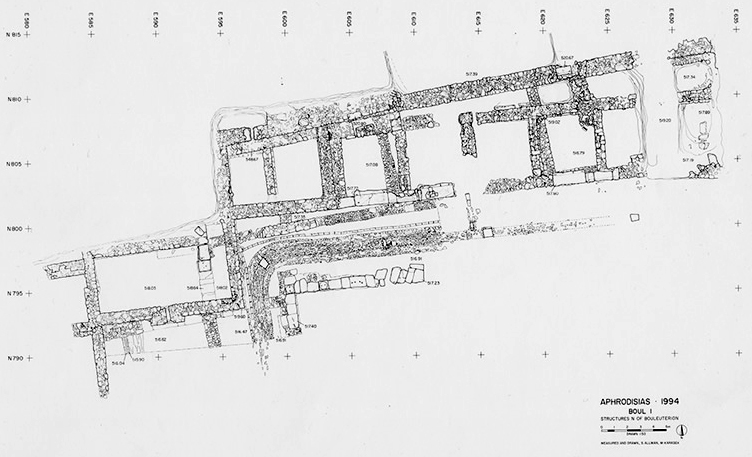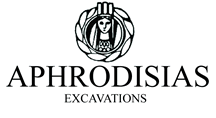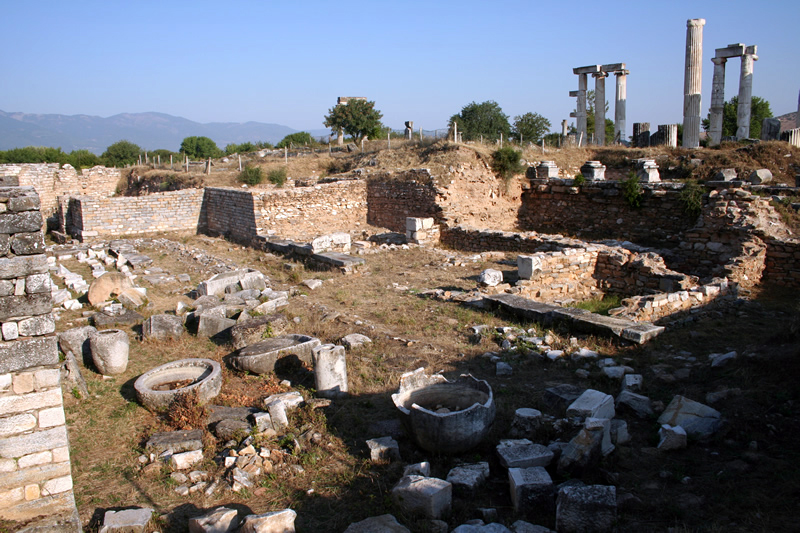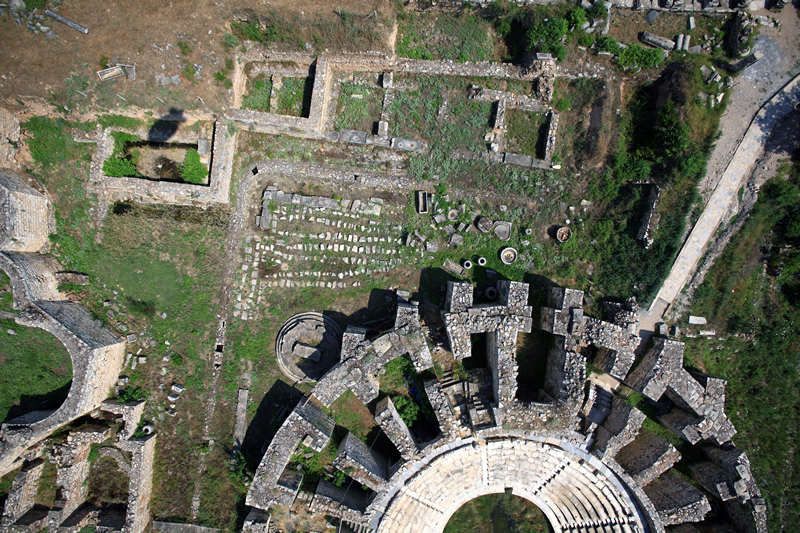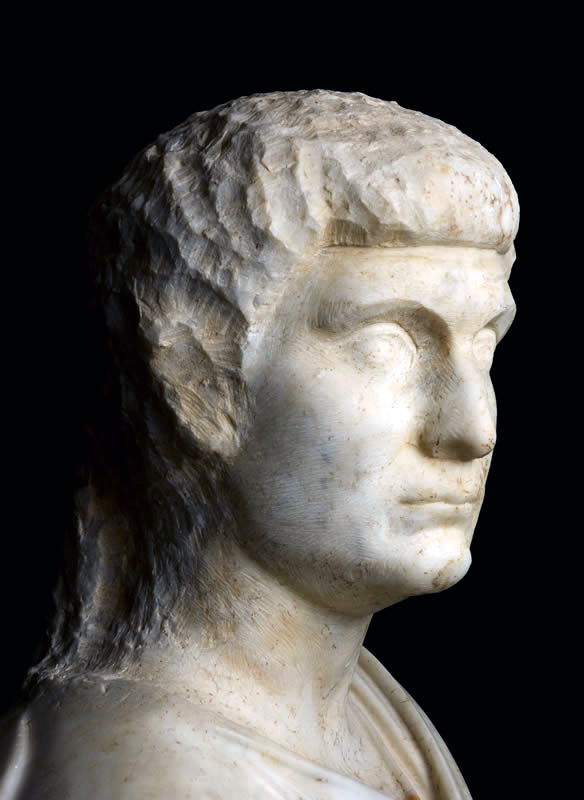Sculptor’s Workshop
The Sculptor’s Workshop occupied two rooms of a small stoa north of the Council House, together with the open area immediately south of these rooms. This was a central location, just north of the Agora and south of the Sanctuary of Aphrodite. Excavations conducted in the late 1960’s uncovered the workshop as it must have appeared at the time it was abandoned or destroyed, probably in the late fourth or early fifth century AD. In addition to the workshop itself, the finds from the excavation included a set of stone-carving tools, a large quantity of sculpture in various states of completion (approximately twenty-five well-preserved statues including both portraits and ideal or mythological figures and 325 fragments), and several ‘practice pieces’ carved by apprentice sculptors as part of their training.
The date of the establishment of the workshop is uncertain, but it is unlikely to be earlier than the re-building of the Council House in the mid- or late second century AD. It is possible that marble-workers first moved into this area to participate in the construction and decoration of the Council House, and that a group of sculptors simply stayed on after the completion of the building, establishing a permanent facility. The workshop remained active at least until c. AD 400, as is shown by the costume and style of an unfinished portrait statue found in the main room of the workshop.
